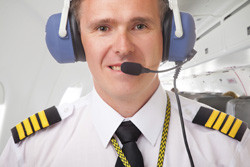Redefining aircraft communications
As air traffic in Europe steadily increases, there is a need to ensure sufficient bandwidth in wireless communication systems in order to handle the increase. By 2030, the number of flights in Europe is expected to double from today's 10 million. The civil aviation sector has to count on a sufficient capacity to support this significant growth. At the same time, it must maintain or improve current safety standards while reducing costs to sustain international competition. This is the reason why the EU launched the Single European Sky ATM Research (SESAR) programme, part of the Single European Sky initiative, to come up with a new approach to reform the air traffic management (ATM) structure in Europe. In this context, the EU-funded project 'Seamless aeronautical networking through integration of data links, radios, and antennas' (SANDRA) researched and developed a promising new communication system. It validated software architectures and system technologies able to cope with next-generation transportation and Internet systems for both passenger communications and in-flight entertainment. The system offers data and digital voice links between the aircraft and ground stations or service providers through a fully Internet Protocol (IP)-based network. In technical terms, all links carry IP packets, while the avionic radios' structure and functions can better handle IP packet-based communications. Moreover, the radio system is modular and adaptable to all current and future aeronautical radio communications systems. To disseminate its results, the project released them in a publication that is available online and free of charge to all interested parties. It created an online user forum and participated in many events such as the Paris Air Show 2013, in addition to publishing several articles on its progress. SANDRA has fully validated the different required technologies to help oversee the transition of today's systems towards a high-performance, network-centric service-oriented architecture and systems. These range from SESAR-developed concepts for ATM to next-generation IP networks for passenger communications to in-flight entertainment. The EU, its citizens and aviation-related industries stand to benefit considerably from the improved efficiency, service, safety and cost reductions that will emerge from this new paradigm in aviation communications.
Keywords
Aircraft communications, wireless communication, air traffic management, aeronautical networking



